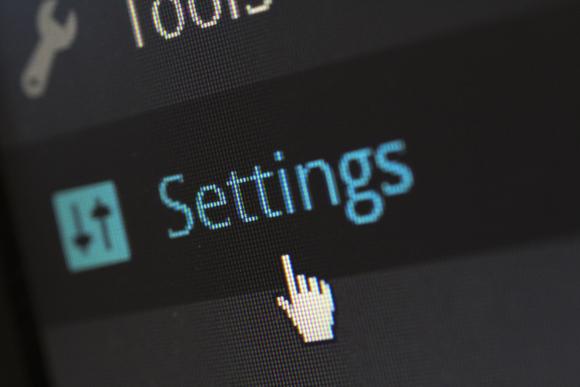"How can you even do all that?!" is a question I get asked more often then I think I should. I consider myself reasonably productive, though apparently I get more done than most people consider normal or even possible.
I guess doing a masters, maintaining a company and launching a number of products all over the span of 9 months does sound a little overkill. But to be fair it seemed like a good idea at the time.
This article covers my favorite considerations, techniques and tools to get things done.
The tools – hardware (body), software (mind) and motivation
Productivity hinges on you functioning at a high level, both physically and mentally. Resources like focus, motivation and creativity are deeply dependent on how you are functioning. This post covers basic principles to get you going.
Principle one: your body is hardware, give it what it needs

Imagine trying to drive to a destination when driving a diesel car filled with regular gasoline… (sputter sputter sputter)
Imagine trying to make an emergency phone call with a phone with a dead battery… (frantic tapping on a black screen)
Imagine trying to make a crappy computer run heavy duty software faster… (the urge to throw the damn thing against a wall)
Just like a car your body runs well on certain fuels and not so well on others. Not only that, unlike cars human bodies change themselves based on the fuel you give them (you are literally what you eat).
Your body’s fuel is food. And it determines your short term energy as well as your long term body composition.
Some good rules of thumb for short term optimization are:
- Stay away from synthetic sugars
- Eat colorful plants
- Eat relatively little during the day
Good rules of thumb for the long term are:
- Eat fatty fish multiple times a week (sardines are super easy)
- Eat quantities that keep you at a healthy BMI (yes, BMI is an incomplete measure but it is a start)
- Increase your vegetable intake
Principle two: your mind is software, so keep it updated

Ever heard of the world championships in memorizing? Yes, they are a thing. Imagine a room with people wearing noise blocking headphones, and even headsets that block out all sound and light. What a sight…
Most interestingly, the participants are not genetic freaks. Rather they use memory techniques anyone can learn.
Your mind is software, meaning that you can learn new techniques that act like software upgrades. Good areas to explore are:
- Mnemonics (memory techniques)
- Holistic learning (learning approach)
More importantly, you should add a weekly calendar item where you plan in 2 hours to learn something new. I personally use Tuesday mornings to pick up new skills.
Principle three: motivation doesn’t just come and go
Can you imagine that one friend of yours that looks at you and complain “I just don’t feel motivated today”… Many people talk about motivation as if it is something that comes and goes without your consent or control. This is not the case.
Just like emotions motivation can be cultivated and channeled. If you feel sad, you can improve your mood with by proper application of music, friends, books, movies and a variety of techniques. Note I’m not talking about clinical depression here, though that can be buffered a little as well.
To discuss how to get motivated, consider what you feel when you feel motivated, for me that is:
- Feeling a desire to do a certain activity/outcome
- Feeling this activity/outcome is within your power to achieve
- Knowing how to get started
Both for long and short term plans make sure that:
- You have a positive emotional charge associated with the goal, keep it somewhere that reminds you (I have postits and mindmaps hanging in my room)
- Make sure you have the skills to get to your outcome, or the means to get them
- Make a game plan, no details needed (this course was planned at 11 bulletpoints)
Have you ever heard what happens when a rabbit sees car headlights? They freeze. In the wild this makes sense, if you don’t know what to do, freezing is a great way not to get eaten.
The same happens with motivation, if there is no clear path most people will simply freeze and do ‘safe’ activities like roaming around on social media. Make sure you have a drive, and a vague idea of what to do. Whenever you freeze, make a better plan.
The what - how president Eisenhower will save your life
Imagine a mother bathing a baby when the phone rings, she quickly runs to the other room to grab the phone, only to realize that the baby might be drowning… Imagine the dread… (FYI babies hold their breath under water, baby survived)
This is a classic example of an Eisenhower problem:
- One task was very important (keeping an eye on baby)
- One task was very urgent (picking up ringing phone)
This quote says it all:
“I have two kinds of problems, the urgent and the important. The urgent are not important, and the important are never urgent.” - Dwight Eisenhower
This gave rise to the Eisenhower matrix, a categorization system for tasks based on urgency and importance.
- Important + urgent: do this ASAP (deadlines, problems, crises)
- Important + not urgent: plan this in (relationships, planning, recreation)
- Not important + urgent: delegate this (interruptions, useless meetings)
- Not important + not urgent: don’t do these (trivial matters, time wasting)
Personally I categorize my tasks during the day and do them based on Eisenhower’s prioritization.
The what – the Pareto principle is productive laziness

I choose a lazy person to do a hard job. because a lazy person will find an easy way to do it. ~ Bill Gates
Imagine Bill Gates, the billionaire founder of Microsoft, telling you the following: “I love hiring lazy people”. He smiles at you and seems totally serious… Actually Bill really said that. Specifically, he said that lazy people find the lowest effort way of completing a task, which is the most efficient one.
The above ties into the Pareto principle which can be phrased as:
80% of outcome is generated by 20% of input
Being busy is not the same as being effective. Being productive means doing things fast. Being effective means choosing the tasks you do well. Your job is to find what is effective. Consider the possibility that:
- 80% of conversations can be had with 20% of words in a language
- 80% of profit in a company comes from 20% of customers
- 80% of your happiness comes from 20% of your relationships
- 80% of your value as an employee comes from 20% of your time
Take a look at your life. What things bring you the outcome you desire? What activities take up your time but produce no output?
Note that output is not just money, it can be anything from health to happiness.
The when – Parkinson’s law
Imagine two kinds of days you’ve probably had. On the one you have a short to do list, on the other you are entirely swamped. On both days you spend a full working day finishing your tasks, even though they both have the same number of hours in them.
This phenomenon is referred to as Parkinson’s law (nothing to do with the disease):
Work expands so as to fill the time available for its completion
In other words, make sure you budget the minimum realistic time for a task. You will find that suddenly you can do far more in a day.
What is important here is that you allot a minimal amount of time to a task, but keep it within reason. Know thyself.
The when – time boxing techniques named after tomatoes

Imagine you are working in a space with multiple people. You get started and get in a nice flow doing your task. Every 5 minutes however something grabs your attention. Maybe someone asks you a question or perhaps you feel the need to check social media channels.
Human being cannot multitask very well. What we actually do is switch between tasks very quickly. Here is the caveat: it takes 5 to 10 minutes to get in a full productive flow. Meaning that every distraction actually cost you 10 minutes of top productivity.
One way of combating this is the Pomodoro technique, named after those kitchen timers in the shape of a tomato. The principle is simple:
- Work in blocks of fully focused 20 minutes
- Take a 5 minute break between blocks
- Take a longer break every full hour
Isolate yourself during your 20 minutes. Tell those around you not to bother you, put in headphones and switch off all notifications.
The how – choose a workflow

Remember the story of an animal freezing when they are not sure what to do? Humans do the same on a productivity level. If it is not clear what you need to do, you will find yourself doing nothing (or at least nothing effective).
The workflow you choose is not the most important factor. What matters is that you choose a workflow you can stick to. There are many such workflow systems, a notable one being the GTD system (Getting Things Done). What matters is that the system:
- Prioritizes tasks (for example using the Eisenhower matrix)
- Has a set protocol for new tasks
- Makes you get things done on time
Me personally, I stick to the following strategy:
- New tasks are put in an Eisenhower matrix
- I use the matrix to determine what needs to happen now and later
- Planning in tasks is done with Google inbox reminders and Google calendar
That means that emails that come in that require action for example are first transferred to the Eisenhower matrix (unless replying takes shorter than a few minutes).
The how – tools to make productivity easier
The single most important thing to note is that a ‘good’ tool is a tool that helps you to get things done. If physical notebooks is that for you, then that is ok. Note however that you should give new tools a chance, just in case they will revolutionize your work.
Tools I use to manage tasks
Eisenhower Assistant is a tool I made myself to track my tasks. It is a basic interface to help prioritize tasks based on the Eisenhower matrix. THIS IS DISCONTINUED (it took me too much effort to maintain).
Google Calendar is a great tool to track appointments and invite others to the events.
Google Inbox views all your emails as tasks. It allows you to mark them as ‘done’ or lets you snooze them to a later date.
Google Assistant is the voice assistant that you can download for Android. Specifically, I use it to plan tasks, for example “Ok Google, remind me to finish my mindmap when I get home”
Physical Notebooks are tools I like using on conferences or other places where I don’t want to be using my phone.
Tools I use to manage planning
Evernote is my favorite note taking app. I use it to jot down ideas, generate checklists and generally plan projects.
Xmind is my favorite mindmapping tool, it’s simple and powerful. I use it to plan structures, summarize information or to do brainstorms.
Postits are a very nice way to turn your walls into planning and brainstorming tools. I have a permanent collection on my closet.
The how – habits you should implement
Imagine you want to gain strength, and decide to do pushups. You could choose a super heavy regime, and for 2 weeks do really well. Ultimately though like so many people you fail to continue after those weeks. Contrast that to doing 5 or even 2 pushups before brushing your teeth every day. A small little habit that would over the years accumulate to a massive amount of progress.
Habits are infinitely more powerful tools than software or hardware can ever be. When it comes to productivity I find the following most useful:
- Take the first half hour of your day your day to plan. I have a cup of tea and do this before even showering.
- Define your three most important todo items for this day (MITs, Most Important Todos)
- Reduce the amount of times you read your email to max 3 times a day
- Work out twice a week, this has a great impact on your capacity to focus
- Stretch every hour when sitting down (bonus point for doing some pushups too
You can add many more of course. For me the best way to implement new habits is:
- Make a list of things I want
- Define when on the day/week I want to do them
- Plan them in in a place I see them (Google Calendar, postits, etc)
